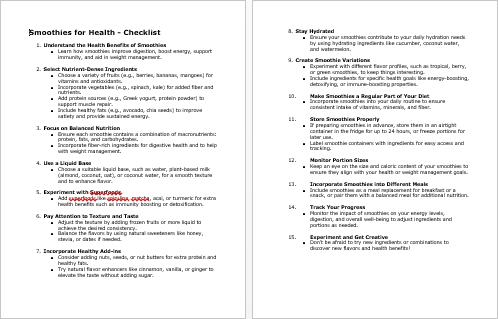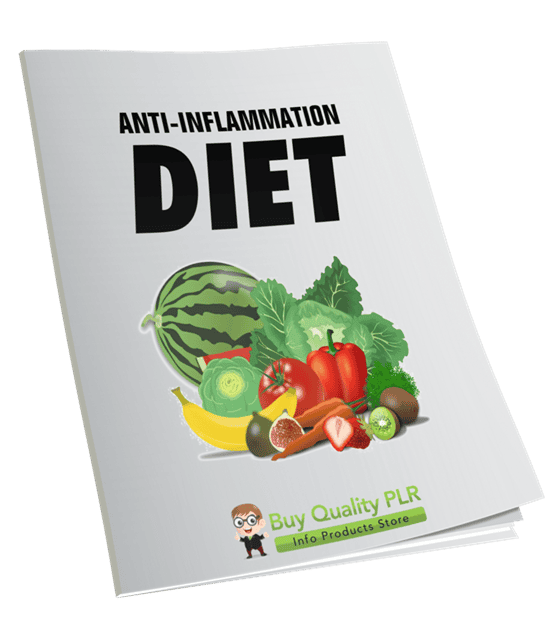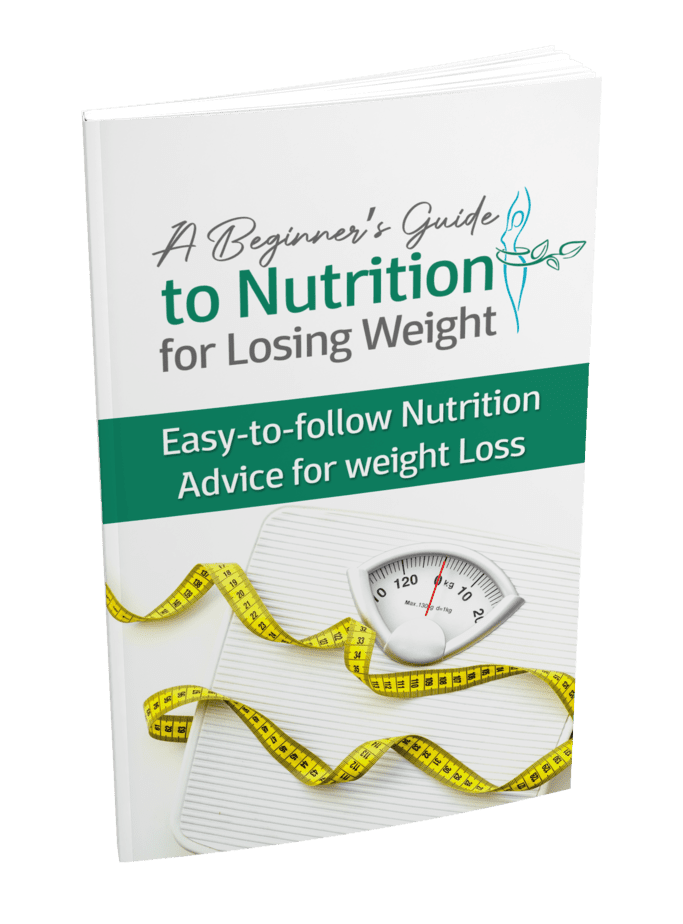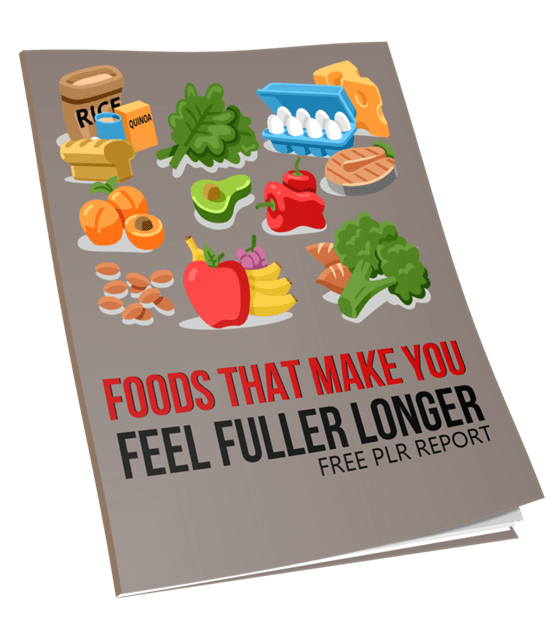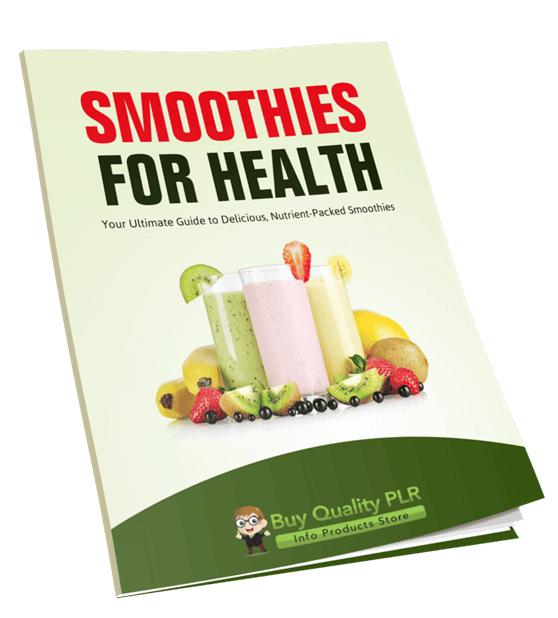
Smoothies for Health PLR Course 23k Words
in Health PLR , Health PLR eBooks , PLR Checklists , PLR eBooks , PLR eCourses , PLR List Building Reports , Premium PLR , Premium PLR eBooks , Premium PLR Reports , Premium White Label Brandable PLR Coaching Courses , Private Label Rights Products , Smoothies PLR , Smoothies PLR eBooksChoose Your Desired Option(s)
has been added to your cart!
have been added to your cart!
#smoothiesforhealth #healthandwellness #nutritiontips #plrcourse #plrcontent #healthyliving #digitalproducts #wellnessbusiness
Smoothies for Health PLR Course – Your Ultimate Guide to Delicious, Nutrient-Packed Smoothies
Are you ready to unlock the power of nutrient-rich smoothies and elevate your health, energy, and overall well-being? The Smoothies for Health PLR Course is a comprehensive, step-by-step training program designed to teach anyone how to create delicious, health-boosting smoothies that cater to individual wellness goals.
Whether your goal is weight management, energy boosting, immune support, detoxification, or simply enjoying a refreshing and nutritious drink, this course gives you everything you need to succeed. It’s perfect for health coaches, bloggers, PLR resellers, or anyone looking to build a business around health and wellness.
Presenting…
Smoothies for Health PLR Course 23k Words
Why Smoothies Are a Game-Changer for Health
Smoothies are more than just a trend—they’re a powerful tool for improving your diet and lifestyle. They allow you to pack a variety of nutrients into a single, convenient drink. Here’s why smoothies are essential:
- Boost Your Nutrient Intake: Easily combine fruits, vegetables, proteins, and superfoods to support overall health.
- Support Digestion: Blended smoothies are easier to digest, helping your gut absorb more nutrients.
- Enhance Energy Levels: Natural sugars, proteins, and superfoods provide sustained energy without crashes.
- Aid Weight Management: High-fiber, low-calorie smoothies help keep you full while delivering essential nutrients.
- Improve Overall Well-Being: From glowing skin to a stronger immune system, smoothies contribute to total body wellness.
With the Smoothies for Health PLR Course, you’ll gain the knowledge and confidence to craft smoothies that not only taste great but also support your health goals.
What You’ll Learn in the Smoothies for Health Course
This course is divided into five comprehensive modules, each packed with actionable tips, practical guidance, and step-by-step instructions for building, customizing, and enjoying your smoothies.
Module 1: Understanding the Basics of Smoothies
Before you start blending, it’s essential to understand the foundations of smoothies.
Step 1: What Are Smoothies?
- Learn the difference between smoothies, shakes, and juices.
- Discover why smoothies are a versatile and nutrient-rich addition to any diet.
Step 2: Why Smoothies for Health?
- Understand the health benefits, including improved digestion, sustained energy, and nutrient absorption.
- Explore how smoothies can replace processed snacks and provide essential daily nutrition.
Step 3: Key Ingredients for a Healthy Smoothie
- Fruits: natural sweetness, vitamins, and antioxidants.
- Vegetables: fiber, vitamins, and minerals without overpowering flavor.
- Proteins: protein powders, Greek yogurt, or nut butters for satiety.
- Healthy Fats: avocado, chia seeds, and flax for heart and brain health.
- Superfoods: matcha, spirulina, goji berries, and more to boost nutrition.
Step 4: Essential Tools and Equipment
- Blenders, measuring cups, and portable bottles.
- Tips for efficiency, cleaning, and maintaining equipment.
By the end of this module, you’ll fully understand what makes a smoothie healthy and how to build the foundation for your creations.
Module 2: Building a Balanced Smoothie
A great smoothie balances flavor, nutrition, and satisfaction.
Step 1: Choosing a Liquid Base
- Water, coconut water, or plant-based milks.
- How liquids affect texture, taste, and calorie content.
Step 2: Adding Fruits for Flavor and Nutrients
- Selecting fruits that complement each other.
- Prepping and freezing fruits to save time.
Step 3: Including Vegetables for a Nutritional Boost
- Sneaking in greens like spinach, kale, zucchini, and carrots.
- Tips for balancing flavor so vegetables enhance, rather than overpower, your smoothie.
Step 4: Enhancing with Proteins and Healthy Fats
- Using protein powders, nut butters, seeds, or yogurt for a filling smoothie.
- Incorporating healthy fats for improved nutrient absorption and satiety.
After completing this module, you’ll be able to create fully balanced smoothies that are delicious, nutritious, and aligned with your health goals.
Module 3: Customizing Smoothies for Your Goals
Different health goals require different ingredients and strategies.
Step 1: Smoothies for Weight Management
- Low-calorie, high-fiber recipes to keep you full and satisfied.
- Tips for meal replacement smoothies without sacrificing nutrients.
Step 2: Energy-Boosting Smoothies
- Ingredients like bananas, oats, and protein to power through mornings, workouts, and long days.
Step 3: Immune-Boosting Smoothies
- Citrus fruits, ginger, and superfoods to strengthen immunity and fight infections.
Step 4: Detox Smoothies
- Ingredients like cucumber, spinach, lemon, and chia seeds to support natural detoxification.
This module ensures you can tailor smoothies to any health goal, making them both effective and enjoyable.
Module 4: Troubleshooting and Tips for Success
Even experienced smoothie enthusiasts face challenges like texture, taste, and storage.
Step 1: Fixing Common Smoothie Problems
- Remedies for thick, thin, bitter, or bland smoothies.
- Adjusting ingredients to improve flavor and texture.
Step 2: Prepping Ingredients for Convenience
- Wash, chop, and freeze fruits and vegetables for quick blending.
- Maintain freshness and reduce prep time with smart storage tips.
Step 3: Budget-Friendly Smoothie Hacks
- Affordable alternatives for expensive superfoods.
- Avoiding waste while keeping nutrition and taste intact.
Step 4: Storing and Transporting Smoothies
- Tips for making smoothies ahead of time.
- Ensuring freshness for work, school, or travel.
By the end of this module, you’ll know how to make smoothie preparation simple, consistent, and enjoyable.
Module 5: Exploring Creative Smoothie Recipes
Learn to elevate your smoothie game with creative and fun recipes.
Step 1: Classic Favorites
- Tropical mango, mixed berry, and banana blends.
Step 2: Green Smoothie Power
- Spinach-pineapple, kale-apple, and other nutrient-packed greens.
Step 3: Dessert-Inspired Smoothies
- Chocolate-banana, strawberry cheesecake, and guilt-free indulgences.
Step 4: Superfood Creations
- Chia, spirulina, matcha, and other powerful superfoods for added health benefits.
After this module, you’ll be able to craft smoothies for every occasion, taste preference, and health objective.
Bonus Materials
- Smoothies for Health Checklist (467 words) – Track your ingredients, meal plans, and daily smoothie habits.
- Smoothies for Health FAQs (1,126 words) – Answers to common questions and troubleshooting tips.
- Smoothies for Health Salespage (674 words) – Ready-to-use copy to market your course online.
How to Use and Profit from This PLR Course
With full PLR rights, you can:
- Sell the Complete Course – Offer it to health-conscious audiences, bloggers, or wellness coaches.
- Break into Mini-Reports ($10–$20) – Focus on specific topics like “Detox Smoothies” or “Green Smoothies.”
- Bundle With Other Health PLR ($47–$97) – Create premium packages for your clients or audience.
- Membership Sites – Offer ongoing smoothie recipes, tips, and coaching for recurring revenue.
- Convert to Multimedia – Video tutorials, audio guides, or eBooks to expand reach.
- Use as Lead Magnets – Grow email lists by offering free smoothie guides, excerpts, or recipes.
- Launch Your Own Health Coaching Product – Use this course as the foundation for workshops, webinars, or coaching services.
This ready-to-go PLR content saves you time, gives you expert material, and allows you to monetize the booming health and wellness niche.
Licensing Terms
Permissions:
- Sell, edit, and repurpose content freely.
- Claim copyright if you modify 75% or more of the content.
- Use for digital courses, eBooks, membership sites, or coaching programs.
Restrictions:
- Cannot transfer PLR rights to your buyers.
- Maximum affiliate commission: 75%.
- Cannot give the full course away for free.
- Cannot bundle without additional purchase.
Why Smoothies for Health PLR is a Must-Have
- Comprehensive and ready-to-use: 21,500+ words of actionable content.
- Covers nutrition, meal planning, customization, and creative recipes.
- Perfect for PLR resellers, health coaches, bloggers, and wellness entrepreneurs.
- Ready for marketing, content creation, and building authority in health & wellness.
Take Action Today
With the Smoothies for Health PLR Course, you can:
- Educate your audience on healthy, delicious smoothies.
- Launch digital products, eBooks, or membership programs.
- Provide content that boosts energy, wellness, and overall health.
- Build authority in the nutrition and wellness niche.
tart today, and help yourself or your audience enjoy a healthier, more energized lifestyle—one smoothie at a time!
has been added to your cart!
have been added to your cart!
Here A Sample of Smoothies for Health PLR Course
A step-by-step guide to creating delicious, nutrient-packed smoothies to boost your health and well-being.
Module 1: Understanding the Basics of Smoothies
Step 1: What Are Smoothies?
Smoothies have become a global health trend, loved for their versatility, nutritional value, and ease of preparation. In this step, we’ll explore the fundamentals of smoothies, distinguish them from shakes and juices, and highlight why they are a go-to choice for health-conscious individuals worldwide.
1.1 Understanding Smoothies
Smoothies are thick, blended beverages made by combining fruits, vegetables, liquids, and other nutrient-rich ingredients in a blender. Unlike juices, smoothies retain all parts of the ingredients, including the fiber, making them a complete and filling option.
Smoothies often include a mix of:
- Fresh or frozen fruits and vegetables for natural sweetness, color, and vitamins.
- A liquid base such as water, milk (dairy or plant-based), or juice to create a smooth consistency.
- Optional add-ins like protein powders, seeds, nuts, or superfoods to enhance their nutritional profile.
They are designed to provide a well-rounded balance of macronutrients (carbohydrates, proteins, and fats) and micronutrients (vitamins and minerals).
1.2 Smoothies vs. Shakes: Key Differences
While smoothies and shakes may seem similar, there are distinct differences in their purpose, ingredients, and texture:
- Smoothies: Typically focused on health and nutrition, they incorporate whole fruits and vegetables, with the option to add protein and healthy fats. They have a thicker consistency than juice but less creamy than most shakes.
- Shakes: Often associated with indulgence or as meal replacements, shakes are usually creamier and may include ice cream, syrups, or sweeteners. Protein shakes, a specific category, are designed for fitness goals, emphasizing high protein content.
When creating a smoothie, the emphasis is on natural, whole-food ingredients, whereas shakes often rely on processed or artificial components for flavor and texture.
1.3 Smoothies vs. Juices: Key Differences
Juices and smoothies are both beverages made from fruits and vegetables, but their preparation methods and nutritional benefits differ:
- Juices: Created by extracting the liquid from fruits or vegetables, juices remove the pulp and fiber, leaving only the liquid. While this allows for quick absorption of vitamins, it often leads to a spike in blood sugar due to the lack of fiber.
- Smoothies: Since they blend the entire fruit or vegetable, including the fiber, smoothies help regulate digestion, keep you full longer, and avoid sharp sugar spikes.
Juices are lighter and less filling, making them suitable for quick hydration or energy boosts, whereas smoothies can serve as a meal or snack.
1.4 Why Are Smoothies Versatile and Nutrient-Rich?
Smoothies are one of the most versatile beverages, suitable for nearly every dietary preference, health goal, and flavor profile. Here’s why they stand out:
- Customizable: Smoothies can be tailored to individual tastes and nutritional needs. For example, athletes might add protein powder, while someone focused on gut health might include probiotics.
- Nutrient-Packed: Smoothies allow you to combine multiple food groups into a single drink, ensuring you get a variety of vitamins, minerals, and macronutrients in one serving.
- Easy to Digest: Blending breaks down the ingredients, making it easier for your body to absorb nutrients while still benefiting from the fiber content.
- Convenient: Whether you need a quick breakfast, a post-workout snack, or a midday energy boost, smoothies are easy to prepare and consume on the go.
1.5 Real-World Application
To better understand smoothies, compare a day’s options:
- Breakfast Juice: Orange juice might hydrate and provide Vitamin C but lacks fiber and leaves you hungry within an hour.
- Protein Shake: A creamy chocolate protein shake may provide protein but is often loaded with artificial sweeteners.
- Smoothie: A spinach, mango, and almond milk smoothie delivers fiber, vitamins, and a natural sweetness, keeping you energized and full longer.
By the end of this lesson, you’ll appreciate the distinct advantages of smoothies and feel confident in incorporating them into your daily routine.
Now that you understand what smoothies are and how they compare to shakes and juices, let’s dive into the key ingredients that make them both delicious and nourishing in the next step.
Step 2: Why Smoothies for Health?
Smoothies are not just delicious beverages; they are powerful tools for promoting energy, digestion, and overall health. In this step, we’ll dive deep into the benefits of smoothies, exploring their role in boosting vitality, enhancing gut health, and supporting your body’s well-being.
2.1 Boosting Energy Naturally
Smoothies are an excellent way to fuel your body with sustained energy throughout the day. Unlike processed snacks or sugary drinks that provide quick but short-lived energy spikes, smoothies deliver a steady release of nutrients, keeping you energized for longer.
- Natural Energy Sources: Smoothies made with fresh fruits like bananas, berries, and mangoes contain natural sugars, which are released gradually into your bloodstream, preventing energy crashes.
- Complex Carbohydrates: Adding oats, sweet potatoes, or whole grains to your smoothies ensures a slow and steady energy supply, ideal for workouts or busy mornings.
- Healthy Fats: Ingredients like avocado, nuts, or seeds provide long-lasting energy by slowing digestion and sustaining blood sugar levels.
- Hydration: Using liquids like coconut water or cucumber in your smoothie helps keep you hydrated, which is essential for maintaining physical and mental energy.
2.2 Improving Digestion
Smoothies are a gentle, effective way to support digestion and gut health. Their fiber-rich content, combined with easy-to-digest nutrients, makes them ideal for people of all ages and dietary preferences.
- Dietary Fiber: Blending whole fruits and vegetables retains the fiber, which promotes regular bowel movements, prevents constipation, and supports a healthy gut microbiome. Fiber also keeps you full longer, aiding in appetite control.
- Digestive Enzymes: Certain ingredients, like pineapple (bromelain) and papaya (papain), contain natural enzymes that aid in breaking down food and reducing bloating.
- Soothing Ingredients: Adding ginger, mint, or aloe vera can calm an upset stomach and alleviate digestive discomfort.
- Probiotics: Incorporating yogurt or kefir introduces beneficial bacteria that improve gut flora, enhancing nutrient absorption and overall digestion.
2.3 Supporting Overall Health
Smoothies can be tailored to meet a wide range of health goals, from boosting immunity to reducing inflammation. By combining diverse, nutrient-rich ingredients, smoothies provide a holistic approach to well-being.
- Immune Support: Ingredients like citrus fruits (vitamin C), spinach (iron), and turmeric (anti-inflammatory) strengthen your immune system, making smoothies ideal for preventing colds and infections.
- Weight Management: Low-calorie, high-fiber smoothies help control hunger and reduce cravings, making them effective for weight loss or maintenance. They also prevent overeating by keeping you satisfied longer.
- Detoxification: Smoothies with detoxifying ingredients like leafy greens, lemon, and spirulina help eliminate toxins from the body, improving skin health and reducing fatigue.
- Mental Clarity: Nutrients like omega-3 fatty acids (from chia or flaxseeds) and antioxidants (from berries or green tea) support brain health, improving focus, memory, and mood.
2.4 Why Smoothies Are an International Favorite for Health
Smoothies have become a global phenomenon due to their adaptability to various dietary needs, cultural preferences, and lifestyles.
- Cultural Diversity: From green tea-based smoothies in Asia to tropical fruit blends in the Caribbean, smoothies can be customized to reflect regional ingredients and traditions.
- Dietary Flexibility: Whether you follow a vegetarian, vegan, gluten-free, or keto diet, smoothies can be easily adapted to fit your lifestyle.
- Time-Saving Nutrition: In today’s fast-paced world, smoothies offer a quick and efficient way to consume a variety of nutrients without compromising quality or flavor.
2.5 Real-World Application
Imagine starting your day with a green smoothie made from spinach, banana, almond milk, and flaxseeds. Not only do you fuel your body with energy, but you also provide your gut with essential fiber and your brain with healthy fats.
Contrast this with skipping breakfast or grabbing a sugary pastry. The smoothie provides lasting energy, whereas the alternative leads to an energy crash and hunger pangs.
By the end of this step, you’ll understand why smoothies are celebrated as a health-boosting powerhouse, trusted by athletes, professionals, and health enthusiasts worldwide.
In the next step, we’ll focus on the key ingredients for a healthy smoothie and how to combine them effectively for maximum health benefits.
Step 3: Key Ingredients for a Healthy Smoothie
Creating a healthy smoothie is like crafting the perfect recipe for nutrition and taste. In this step, we’ll break down the essential components of a balanced smoothie: fruits, vegetables, proteins, healthy fats, and superfoods. By understanding how each ingredient contributes to your health, you’ll be equipped to design smoothies that meet your nutritional goals and suit your palate.
3.1 Fruits: The Foundation of Flavor and Nutrients
Fruits are often the base of most smoothies, providing natural sweetness, vibrant color, and a wealth of vitamins and minerals.
- Nutritional Benefits: Fruits are rich in vitamins (like vitamin C in oranges and strawberries), antioxidants (such as anthocyanins in blueberries), and fiber. They help support immune function, improve digestion, and provide a natural energy boost.
- Popular Choices: Bananas for creaminess, berries for antioxidants, mangoes for tropical sweetness, and apples for fiber.
- Global Options: Adapt your fruit choices based on availability. For instance, guava, lychee, or jackfruit can add an exotic twist to your smoothies in tropical regions.
Tip: Use a mix of fresh and frozen fruits to achieve the desired texture. Frozen fruits can replace ice, resulting in a thicker smoothie without diluting the flavor.
3.2 Vegetables: Adding Fiber and Nutrient Density
Adding vegetables to smoothies is an excellent way to boost their nutritional profile without compromising taste.
- Why Add Vegetables? Vegetables are low in calories but high in fiber, vitamins, and minerals. They help improve digestion, support weight management, and enhance detoxification.
- Mild-Tasting Options: Spinach, kale, zucchini, or cucumber blend seamlessly without altering the flavor significantly.
- Vibrant Options: Carrots, beets, or sweet potatoes add natural sweetness and color while providing a nutrient boost.
Tip: For beginners, start with a small handful of leafy greens and gradually increase the quantity as your taste buds adjust.
3.3 Proteins: Building Blocks for Strength and Satiety
Including a protein source in your smoothie makes it more filling and supports muscle repair, tissue growth, and overall energy.
- Plant-Based Proteins: Options like chia seeds, hemp seeds, tofu, and plant-based protein powders are ideal for vegan or vegetarian diets.
- Animal-Based Proteins: Greek yogurt, milk, or whey protein powders provide high-quality protein for those who consume dairy.
- Global Considerations: Use regionally available options, such as mung bean powder in Asia or quinoa protein in South America, to add a local twist.
Tip: A well-balanced smoothie should include 10-20 grams of protein, depending on your dietary needs.
3.4 Healthy Fats: Sustained Energy and Nutrient Absorption
Healthy fats are essential for satiety, energy, and the absorption of fat-soluble vitamins like A, D, E, and K.
- Common Options: Avocado for creaminess, nut butters for flavor, and coconut milk for a rich texture.
- Seeds: Flaxseeds and chia seeds are excellent sources of omega-3 fatty acids, which support brain and heart health.
- Portion Control: Fats are calorie-dense, so a small serving (e.g., a quarter of an avocado or a tablespoon of nut butter) is sufficient for most smoothies.
Tip: Blending fats with fiber (from fruits or vegetables) ensures a smooth release of energy, preventing blood sugar spikes.
3.5 Superfoods: The Nutritional Powerhouses
Superfoods are nutrient-dense ingredients that provide additional health benefits. While not essential, they can elevate your smoothie’s nutritional value.
- Popular Choices:
- Spirulina or chlorella for detoxification and energy.
- Matcha or green tea powder for antioxidants and a gentle caffeine boost.
- Maca powder for hormonal balance and stress reduction.
- Cacao nibs for a chocolatey flavor and magnesium.
- Cultural Variations: Add adaptogenic herbs like ashwagandha in India or baobab powder in Africa for regional superfood enhancements.
Tip: Use superfoods sparingly—a teaspoon or two is often enough to enjoy their benefits without overpowering the taste.
3.6 Real-World Application
To build a balanced smoothie, think of it as creating a nutritious meal:
- Step 1: Start with a fruit base (e.g., frozen mango and banana).
- Step 2: Add a handful of leafy greens (e.g., spinach or kale).
- Step 3: Include a protein source (e.g., Greek yogurt or chia seeds).
- Step 4: Add a healthy fat (e.g., half an avocado or almond butter).
- Step 5: Enhance with a superfood (e.g., a teaspoon of spirulina or cacao).
- Step 6: Blend with a liquid base (e.g., almond milk or coconut water) until smooth.
This combination ensures you get the right balance of macronutrients and micronutrients to fuel your body.
3.7 A Global Perspective on Ingredients
The beauty of smoothies lies in their adaptability. No matter where you are in the world, you can use locally available ingredients to create a delicious and healthy smoothie. Embrace regional fruits, vegetables, and superfoods to make your smoothies unique and culturally inspired.
By the end of this step, you’ll have a clear understanding of how to combine these key ingredients into a balanced, nutrient-rich smoothie. Next, we’ll move on to Step 4: Perfecting the Art of Blending to ensure every sip is smooth, delicious, and packed with goodness.
Step 4: Essential Tools and Equipment
Creating perfect smoothies requires the right tools and equipment. While the ingredients provide the nutrients, the tools ensure smooth blending, precise measurements, and an enjoyable process. In this step, you’ll learn about the must-have tools, how to use them efficiently, and practical tips for choosing and maintaining your equipment for long-term success.
4.1 The Blender: The Heart of Smoothie-Making
The blender is the single most important tool for making smoothies. Choosing the right one and knowing how to use it effectively is key to achieving the perfect texture.
- Types of Blenders:
- High-Powered Blenders: These are ideal for making creamy smoothies and blending tough ingredients like frozen fruits, nuts, and leafy greens. Popular brands include Vitamix and Blendtec.
- Standard Blenders: These are affordable and sufficient for soft ingredients but may struggle with fibrous or frozen items.
- Personal Blenders: Compact and great for single servings, these come with blending jars that double as travel cups (e.g., NutriBullet).
- Choosing the Right Blender:
- Consider motor power (at least 600 watts for frozen fruits or tough greens).
- Opt for a durable, BPA-free jar.
- Look for easy-to-clean designs, especially detachable blades.
- Tips for Use:
- Always add liquids first to prevent the blades from jamming.
- Start at a low speed and gradually increase to high for a smooth consistency.
- Pulse for chunky textures or thicker smoothies.
4.2 Measuring Cups and Spoons: Precision for Perfect Portions
Accurate measurements are crucial for achieving the right flavor, texture, and nutritional balance.
- Types of Measuring Tools:
- Dry Measuring Cups: Used for solid ingredients like fruits, seeds, or powders.
- Liquid Measuring Cups: Typically made of glass or plastic, these are designed for liquids like milk or juice.
- Measuring Spoons: Essential for small quantities of superfoods, spices, or extracts.
- Tips for Efficient Use:
- Level off dry ingredients with a knife for accurate measurements.
- Use a graduated liquid measuring cup with clear markings for precision.
- Pre-measure ingredients in advance to streamline your smoothie-making process.
Bonus Tip: If you’re making smoothies often, consider a digital kitchen scale to weigh ingredients for consistency, especially when following recipes.
4.3 Utility Tools: Simplifying the Process
Besides the blender and measuring tools, having the right utility tools can save time and effort.
- Cutting Board and Knife: Use a sturdy cutting board and a sharp chef’s knife to chop fruits, vegetables, and other ingredients.
- Spatula: A flexible silicone spatula helps scrape down the sides of the blender, ensuring no ingredient goes to waste.
- Ice Cube Trays: Freeze liquids like coconut water or almond milk into ice cubes for chilled smoothies without dilution.
- Storage Jars: Mason jars or BPA-free containers are perfect for storing smoothies or prepping ingredients in advance.
- Tips for Maintenance:
- Use a separate cutting board for fruits and vegetables to avoid cross-contamination.
- Wash tools immediately after use to prevent food residue from sticking.
4.4 Optional Equipment: Enhancing Your Smoothie Game
While not essential, these tools can make smoothie-making more enjoyable and efficient:
- Immersion Blender: Handy for blending small batches directly in the container.
- Strainer or Nut Milk Bag: Use for making smoother, pulp-free smoothies or homemade nut milk.
- Vacuum Blender: Reduces air bubbles for smoother texture and preserves nutrients by minimizing oxidation.
- Spice Grinder: Ideal for grinding seeds, nuts, or spices into a fine powder.
- Specialty Tools:
- Juicers: For incorporating fresh juices into your smoothies.
- Smoothie Bottles: Leak-proof bottles with straws for enjoying your smoothie on the go.
4.5 Cleaning and Maintenance: Keeping Tools in Top Shape
Proper maintenance of your tools ensures they last longer and remain efficient.
- Blender Cleaning Tips:
- Rinse immediately after use to prevent buildup.
- Blend warm water with a drop of dish soap on high speed, then rinse thoroughly.
- Avoid submerging the motor base in water; instead, wipe it with a damp cloth.
- Knife and Cutting Board Care:
- Use a knife sharpener regularly to maintain a sharp edge.
- Clean wooden boards with mild soap and dry immediately to prevent warping.
- Storing Tools:
- Store blenders and utility tools in a clean, dry space to avoid dust or mold.
- Keep measuring tools organized in a dedicated drawer or container for quick access.
4.6 Real-World Application: Setting Up a Smoothie Station
To make the process seamless, set up a designated smoothie-making station in your kitchen:
- Organize Tools: Keep your blender, cutting board, and measuring tools in one place for easy access.
- Prep Ingredients: Pre-chop and freeze fruits or vegetables to save time during busy mornings.
- Stock Superfoods: Store seeds, powders, and nuts in labeled jars for quick additions.
- Clean as You Go: Wipe down surfaces and wash tools immediately after use to maintain a tidy space.
By mastering the use of essential tools and equipment, you’ll make smoothie preparation efficient and enjoyable. In the next step, Step 5: Perfecting the Art of Blending, you’ll learn advanced blending techniques and tips to create consistently smooth and delicious smoothies.
We’re also giving these extra bonuses
Smoothies for Health – Checklist
Smoothies for Health – FAQs

Smoothies for Health – Salespage Content
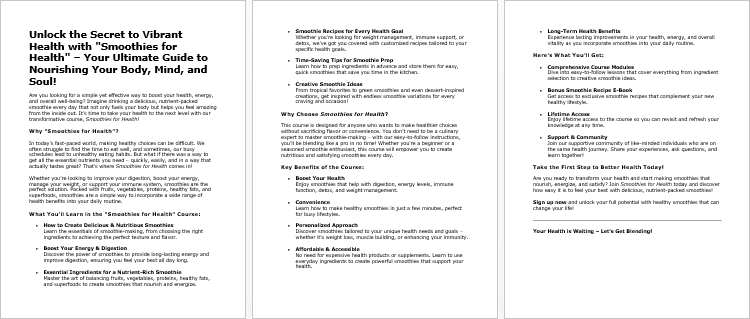
Package Details:
Word Count: 21 547 Words
Number of Pages: 94
Smoothies for Health – Bonus Content
Checklist
Word Count: 467 words
FAQs
Word Count: 1126 words
Salespage Content
Word Count: 674 words
Total Word Count: 23 814 Words
Your PLR License Terms
PERMISSIONS: What Can You Do With These Materials?
Sell the content basically as it is (with some minor tweaks to make it “yours”).
If you are going to claim copyright to anything created with this content, then you must substantially change at 75% of the content to distinguish yourself from other licensees.
Break up the content into small portions to sell as individual reports for $10-$20 each.
Bundle the content with other existing content to create larger products for $47-$97 each.
Setup your own membership site with the content and generate monthly residual payments!
Take the content and convert it into a multiple-week “eclass” that you charge $297-$497 to access!
Use the content to create a “physical” product that you sell for premium prices!
Convert it to audios, videos, membership site content and more.
Excerpt and / or edit portions of the content to give away for free as blog posts, reports, etc. to use as lead magnets, incentives and more!
Create your own original product from it, set it up at a site and “flip” the site for megabucks!
RESTRICTIONS: What Can’t You Do With These Materials?
To protect the value of these products, you may not pass on the rights to your customers. This means that your customers may not have PLR rights or reprint / resell rights passed on to them.
You may not pass on any kind of licensing (PLR, reprint / resell, etc.) to ANY offer created from ANY PORTION OF this content that would allow additional people to sell or give away any portion of the content contained in this package.
You may not offer 100% commission to affiliates selling your version / copy of this product. The maximum affiliate commission you may pay out for offers created that include parts of this content is 75%.
You are not permitted to give the complete materials away in their current state for free – they must be sold. They must be excerpted and / or edited to be given away, unless otherwise noted. Example: You ARE permitted to excerpt portions of content for blog posts, lead magnets, etc.
You may not add this content to any part of an existing customer order that would not require them to make an additional purchase. (IE You cannot add it to a package, membership site, etc. that customers have ALREADY paid for.)
Share Now!

